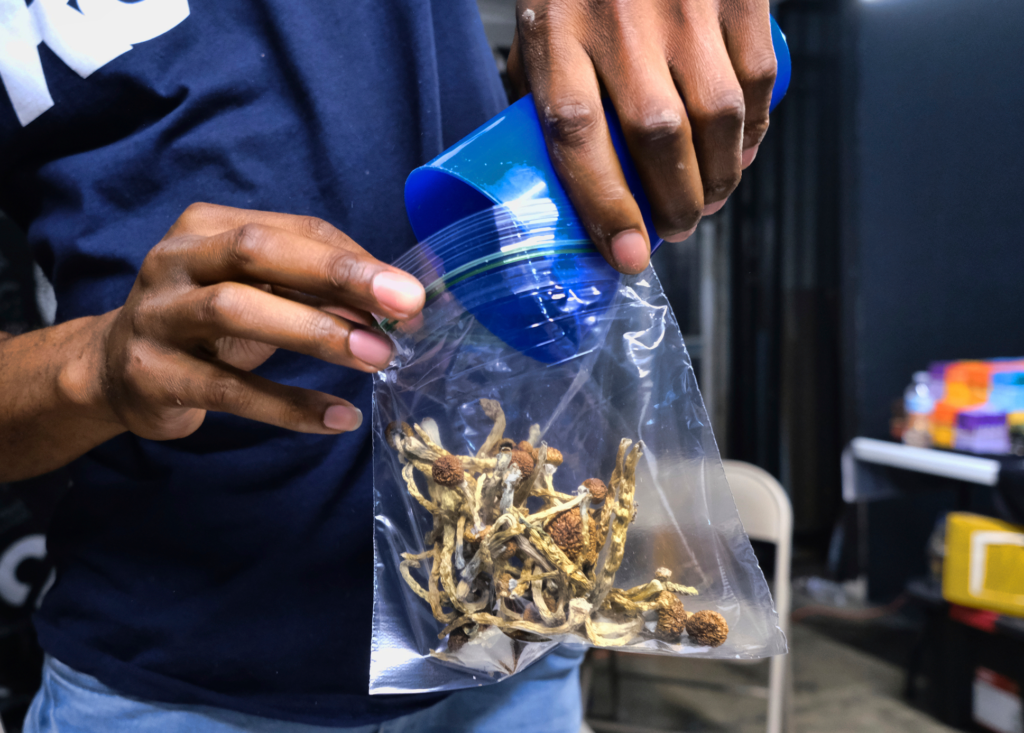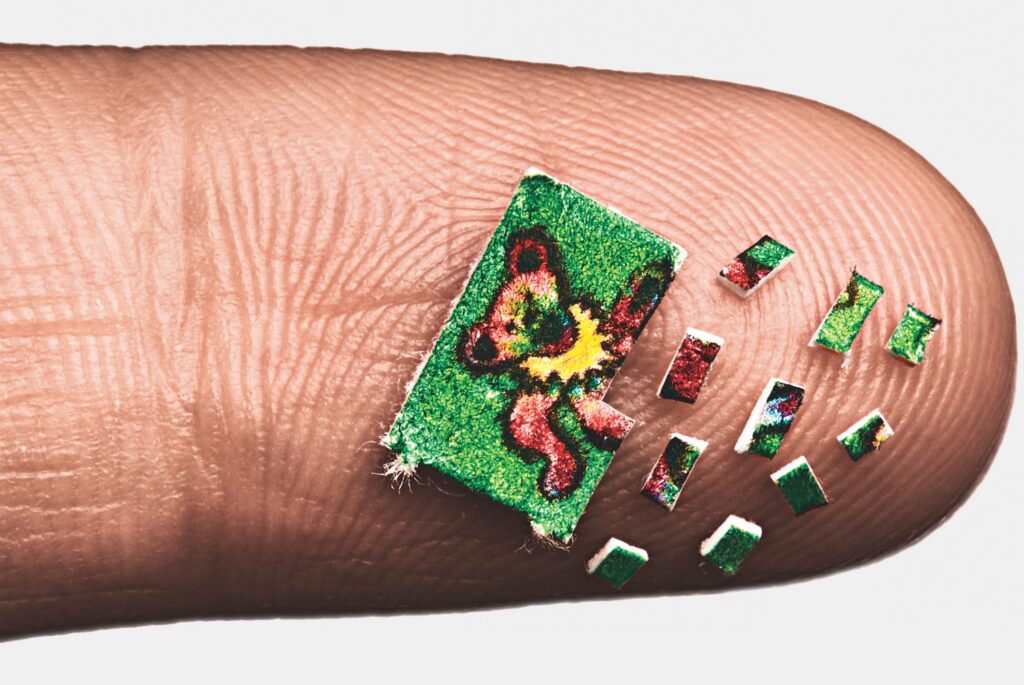Upon first inspection, Psilocybe cubensis mushrooms, also known as magic mushrooms, do not seem particularly extraordinary. In fact, their scientific name – “bald head” – reflects their rather unremarkable appearance. However, those who have consumed these mushrooms report significant changes in their perception and mood, leading to interest in their potential as a treatment for depression. Despite their unassuming appearance, magic mushrooms have the ability to alter one’s reality.
Magic mushrooms, including the species Psilocybe cubensis, are known for their psychoactive compounds psilocybin and psilocin, which can produce hallucinations, euphoria, and other altered states of consciousness. These mushrooms have a long history of use in religious ceremonies in Central America, such as those of the Maya. However, magic mushrooms are currently classified as a controlled substance in many countries, including the United States, and are illegal to possess, cultivate, and use. Despite their illegal status, magic mushrooms continue to be traded on the black market.
Have you ever wondered how a small, unassuming mushroom can have such a profound impact on the brain? In this article, we will explore the mysterious mechanisms behind the effects of magic mushrooms, also known as “shrooms.”
Magic mushrooms alter the brain, causing changes in perception
While the effects of magic mushrooms may seem to cause a “mind-melting” feeling, the drug actually enhances the brain’s connectivity, according to a study from 2014. In the study, researchers at King’s College London used brain scans to compare the brain activity of 15 volunteers after taking magic mushrooms to their brain activity after taking a placebo. The scans showed that, when under the influence of the drug, the brain increased communication between areas that would not normally be connected. This change in brain activity may explain the altered state of consciousness that many users experience after taking magic mushrooms. More recent research in 2021 has also suggested that magic mushrooms may have rapid and lasting antidepressant effects.
Magic mushrooms slow brain activity, altering perception and cognition
Magic mushrooms act on the brain in a number of unique ways. The active compound in magic mushrooms, psilocybin, binds to serotonin receptors, although the exact effects of this binding are not yet fully understood. Some studies have shown that psilocybin can alter brain activity and communication, such as increasing the synchronization of activity between brain regions. Other research has found that psilocybin can decrease activity in brain areas involved in information processing, such as the thalamus. This decrease in activity may allow for greater communication between brain regions. Additionally, some studies have suggested that magic mushrooms may help to “reset” the brains of people with depression.
Magic mushrooms have a long history
Magic mushrooms have been used for centuries in Central America, and may have even been used as far back as 9,000 years ago in the Sahara region, according to some interpretations of ancient rock art. This art, which depicts masked figures holding mushroom-like objects and mushrooms positioned behind anthropomorphic figures, has been suggested as evidence of the use of hallucinogenic mushrooms in the ancient Sahara. However, the mushroom figures in the art have also been interpreted as flowers or other plant matter, so it is not definitively known whether magic mushrooms were used in this region.
The legend of Santa Claus may have been influenced by magic mushrooms
According to some theories, the legend of Santa Claus may have been influenced by the use of magic mushrooms in indigenous cultures. It is suggested that Siberian shamans used to deliver gifts of hallucinogenic mushrooms to households during the winter season, and that the reindeer in the Santa Claus story were associated with these shamans and the use of magic mushrooms. Some have also pointed to the red and white colors of Santa’s outfit as reminiscent of the colors of certain species of magic mushrooms. However, this theory remains largely speculative and is not accepted by all anthropologists.
Magic mushrooms may boost well-being
Magic mushrooms may be able to permanently alter a person’s personality in adulthood, according to some research. A study from 2011 found that a single dose of psilocybin, the active compound in magic mushrooms, caused people to become more open to new experiences for at least 14 months. People with open personalities are generally more creative, appreciate art more, and value novelty and emotion. The effects of psilocybin on emotions may be responsible for this change, as many people report feeling joy and a sense of connection to others and the world after taking magic mushrooms. In addition to potentially altering personality, magic mushrooms have also been shown to help people quit smoking and reduce depression in clinical trials. However, it is important to note that not all research has supported the benefits of magic mushrooms, and more research is needed to fully understand their potential risks and benefits.
Magic mushrooms may reduce fear
Magic mushrooms have the ability to reduce fear and anxiety in some individuals. A study from 2013 found that mice given a low dose of psilocybin, the active compound in magic mushrooms, were less likely to freeze in fear when they heard a noise that they had previously learned to associate with a painful shock. This effect was not observed in mice that did not receive the drug. The researchers of this study suggested that magic mushrooms may have potential as a treatment for mental health conditions, such as post-traumatic stress disorder, and noted the need for further research on the use of psilocybin in humans. More recent research has also shown that magic mushrooms may be able to reduce depression and anxiety in people with advanced cancer, and may also help to reduce fear.
Magic mushrooms produce wind through sporulation
Magic mushrooms use a process called “sporulation” to reproduce and disperse their spores. Some species of magic mushrooms, including Amanita muscaria, are able to create their own wind to help lift their spores into the air and increase the chances of successful reproduction. They do this by increasing the rate of water evaporation from their surfaces, which creates a cool air and water vapor mixture that can lift the spores up to 4 inches above the mushroom. This unique mechanism allows magic mushrooms to reproduce and spread their spores, even in sheltered environments where the wind may not be strong enough to disperse them naturally.
There are many different types of mushrooms
There are more than 180 species of mushrooms that contain the psychoactive compound psilocybin, according to some estimates. These mushrooms are found all around the world, with Latin America and the Caribbean being home to over 50 species, and Mexico alone hosting 53 different species. In total, there are 22 species of magic mushrooms in North America, 16 in Europe, 19 in Australia and the Pacific island region, 15 in Asia, and 4 in Africa.
Researchers are studying the effects of magic mushrooms on mental health conditions
Scientists are conducting research on the use of magic mushrooms and their active compound, psilocybin, as potential treatments for mental health conditions such as depression, anxiety, and addiction. However, psilocybin is classified as a Schedule I substance by the Drug Enforcement Administration (DEA), meaning it has no accepted medical use and a high potential for abuse, which has made it difficult to conduct research on the drug. In the past, psilocybin and other hallucinogenic drugs were at the center of a thriving research program, including the Harvard Psilocybin Project, which conducted a number of experiments with magic mushrooms in the 1960s. These studies, including the Marsh Chapel Experiment, suggested that psilocybin may be able to produce mystical and spiritual experiences in some individuals, and some participants reported feeling a greater sense of unity and sacredness after taking the drug. However, more research is needed to fully understand the potential risks and benefits of psilocybin.
Terence McKenna was an influential figure in the popularization of magic mushrooms
Terence McKenna was an influential writer and ethnobotanist who played a key role in popularizing magic mushrooms in the United States. He discovered psilocybin mushrooms during a trip to the Amazon in 1971 and later published “Psilocybin: Magic Mushroom Grower’s Guide,” a manual for cultivating the mushrooms at home. Through his writing and activism, McKenna helped bring magic mushrooms into mainstream drug culture and played a significant role in increasing their popularity.
Magic mushrooms affect animals
In the wild, animals have been known to consume magic mushrooms. In 2010, pygmy goats at a UK animal sanctuary were reported to have eaten magic mushrooms and experienced lethargy, vomiting, and difficulty walking. Siberian reindeer have also been known to consume magic mushrooms, though it is not clear if they feel the effects. In the past, Siberian mystics would drink the urine of deer that had ingested mushrooms as a way to achieve a hallucinogenic experience for religious rituals.


